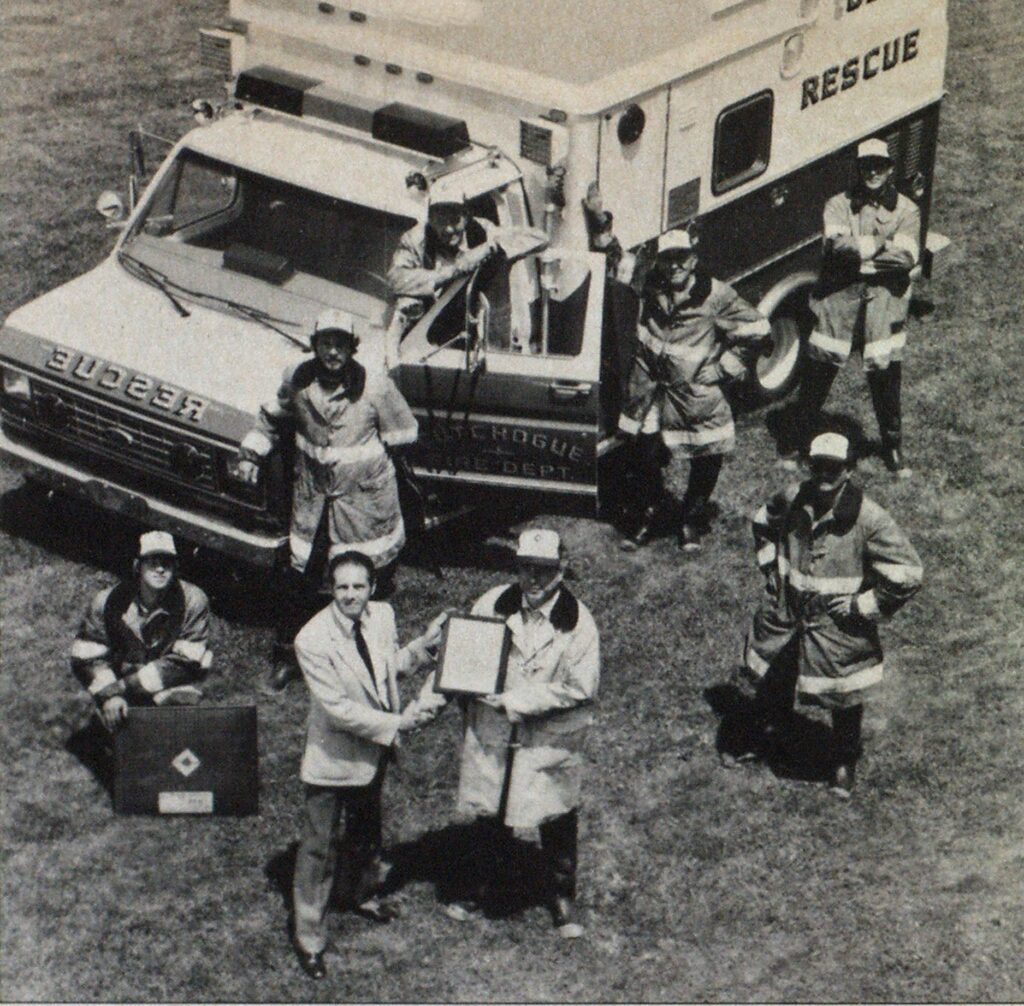
NEWS
Fire protection should include safeguards against natural causes
Fires resulting from “unknown causes” make up a good percentage of our annual fire statistics. But how many of these fires of “undetermined origin” could possibly be attributed to lightning?
According to Marvin M. Frydenlund, managing director of the Lightning Protection Institute in Harvard, IL, there is a high rate of fire calls during thunderstorms. Unless someone actually sees lightning strike, explains Frydenlund, a lumber yard fire touched off by lightning, for instance, might be listed as an “unknown cause.”
Frydenlund notes that a recent report stated that lightning causes approximately 30,000 incidents of damage and/or fire each year.
Based on 1982 figures in THE FIRE ALMANAC, 1.8% of the 946,500 reported structural fires were due to natural causes, 8% were due to unknown causes. These estimates are taken from fire department reports in the 32 states that participate in the National Fire Incident Reporting System.
The incidence of lightning is high, with 50 or more thunderstorms each year in a broad band that starts in Colorado, follows the Continental Divide south between New Mexico and Arizona, and stretches east through Texas and the Gulf Coast. According to a release by the University of Maryland-College Park, lightning intensity reaches its peak in central Florida, which has an annual average of 100 or more thunderstorms each year. Lightning intensity increases from north to south along the east coast. The northeast averages only 20 thunderstorms each year; the mid-Atlantic area, 30 to 40; and the southeast (excluding Florida), 50 to 70. Areas west of the Rocky Mountains and throughout Alaska and Hawaii experience fewer than 10 thunderstorms each year.
The fact that lightning presents a very real tire threat was recognized by the National Fire Protection Association back in 1904, when it first adopted Specifications for Protection of Buildings Against Lightning. The latest NFPA standards for lightning protection were adopted in 1980 (see NFPA 78-1980, Lightning Protection Code).
EMI offers additional courses
More than 100 courses in emergency management specialties will be offered during 1985 at the Federal Emergency Management Agency’s (FEMA) Emergency Management Institute (EMI) in Emmitsburg, MD.
Subjects in EMI’s curricula range from radiological preparedness to emergency health and medical management in disasters to flood hazard mitigation, all emphasizing the role of management to protect the public. In addition, there will be a variety of technical courses in specific hazards.
Enrollment in all courses is open to everyone in the emergency management community. Catalogs may be obtained from the National Emergency Training Center, Registrar, Emmitsburg, MD 21727.

John Getting of Vetter Systems presents Certificate of Recognition to First Assistant Chief Robert Fisher of the Cutchogue, NY, Fire Department “in acknowledgement of extraordinary decisiveness and professionalismin response to a life-threatening emergency.”
About 4 a.m., a jeep hit a telephone pole and rolled onto its side, dislodging the upper portion of the poles The driver was trapped beneath the overturned jeep in such a way that the rescue squad couldn’t roll the vehicle over without crushing the victim’s chest. In addition, the 7,600-volt telephone wires were exposed and hot. Firefighters couldn’t wait for the electric company to arrive and turn off the power.
After shoring the vehicle, the rescue crew placed one air bag under the jeep’s frame and another air bag under the roll bar. Inflating the bags, the jeep was raised approximately four-inches off the ground and the victim was safely extricated and transported to the hospital.
Other members of the rescue team are (clockwise) Larry Behr, Elliot Dawson, Second Assistant Chief Alan, Glover, Stan Salter, Bill Lademann, and Tom Shalvey.
Quality Circles—a problem-solving idea that’s catching on
The Quality Circle, a participative management system in which all organizational levels get involved in company decision making, is beginning to make inroads in the United States, according to a survey conducted by the Quality Circle Institute (QCI) in Red Bluff, CA.
“Quality Circles are designed to assist the management of an organization, not replace it . . .,” said Deputy Chief William B. Walton of the Charlottesville, VA, Fire Department in “Participative Management,” an article in the July 1983 issue of FIRE ENGINEERING. The Quality Circle is an effective way of making all ranks of the fire service feel like they are truly part of the organization, as well as tapping one of the organization’s most valuable resources—people.
Although the survey did not poll fire departments in particular, results showed that 12 city governments throughout the United States have implemented the Quality Circle concept, according to John T. Allen of QCI.
About 15% of the 2,000 questionnaires sent out by QCI were answered. Of these, 30% estimated that for every $1 spent on a Quality Circle (most organizations pay the Quality Circle participants their wages while they attend Quality Circle meetings) the organization saved $2 to $3 by utilizing ideas and solutions suggested by the Quality Circle.
For more information on Quality Circles or for a free copy of QUALITY CIRCLE DIGEST, write to QUALITY CIRCLE DIGEST. Janice Minch, Circulation Manager, P.O. Box Q, Red Bluff, CA 96080.

